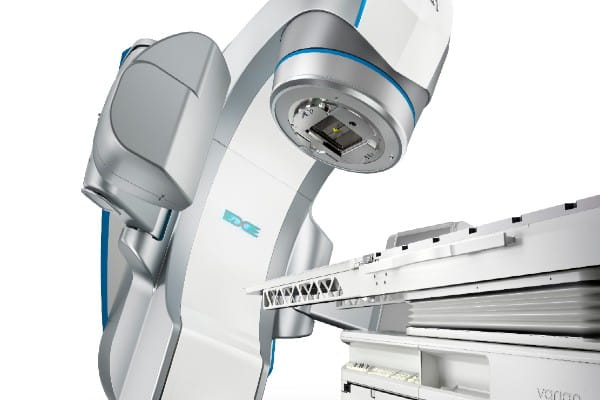Spinal Trauma Overview
What is spinal trauma?
A serious back injury from a traumatic event, such as a motor vehicle accident, fall, gunshot wound or serious sports injury, can cause damage to the vertebrae in the spinal column as well as the spinal cord itself.
Emergency medical services (EMS) responders transport patients with traumatic injuries like these to an appropriate trauma center, such as Riverside Regional Medical Center, which is a Level II trauma center staffed with an on-call neurosurgeon 24 hours a day.
When a serious accident occurs, 911 should always be called so the individual can be transported safely and quickly to receive care. You should not move the patient, which could cause additional injury and/or paralysis. Instead, you should place rolled towels on either side of the head and neck to prevent any movement until the EMS team can arrive and provide a more secure collar. You can and should provide basic first aid to other injuries (such as stopping bleeding), but do not move the head, neck or back.
Spinal cord injuries can be complete, meaning all control of the body below the site of injury is lost, or incomplete, meaning there is some remaining control below the injury. Paralysis is described by the limbs involved. When all or part of the trunk, legs, pelvis are paralyzed, but the individual retains use of their arms, this is called paraplegia. Quadriplegia, or tetraplegia, is a condition in which paralysis impacts the arms, hands, trunk, pelvis and legs. Depending on the injury, an individual may have use of some arm muscles but not others. Due to swelling that occurs immediately after the injury and resulting surgery, the actual level of paralysis is not immediately known.
Who gets it and when?
Anyone can experience a trauma, but men, especially young men, are much more likely to incur a spinal cord injury. Male patients make up 80% of spinal cord injuries.
Spinal Trauma Causes and Risk Factors
What are the causes and risk factors of spinal trauma?
Alcohol is involved in 25% of spinal cord injuries, though the injured person is not always the person drinking. This underscores the importance of never driving while drunk, altered or distracted by a phone. Seatbelts and airbags significantly decrease risk in a motor vehicle accident, as does wearing a helmet while riding a motorcycle or participating in high-risk sports like bike riding, skiing, etc.
Spinal Trauma Symptoms
What are the signs and symptoms of spinal trauma?
Signs and symptoms of spinal trauma include:
- Pain
- Numbness and tingling
- Loss of control of bowel and bladder
- Paralysis
Any suspected injury to the spine or spinal cord should be treated as a medical emergency. The patient should not be moved, as movement could cause additional injury. 911 should always be called.
Spinal Trauma Diagnosis
How is spinal trauma diagnosed?
The diagnosis of a spinal trauma will likely include a medical history, physical exam and diagnostic imaging such as X-ray, MRI and/or CT.
Spinal Trauma Treatment
How is spinal trauma treated?
After a spinal cord injury, the goal is to stabilize the spine to prevent additional injury. Often, a surgical fixation or fusion surgery is performed to accomplish this, followed by treatment with high doses of steroids to control and reduce swelling.
Each individual case is unique and multi-faceted, and Riverside neurosurgeons frequently work with other specialists who may be managing other injuries incurred in an accident. Long-term rehabilitation [LINK to Riverside Rehabilitation Hospital is often involved, and during this process the neurosurgery team works closely with our physical medicine and rehabilitation physicians to ensure the most effective care plan for each patient’s recovery.


